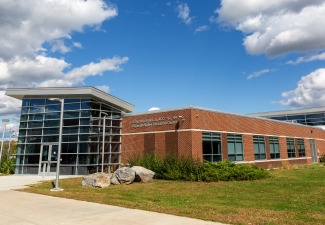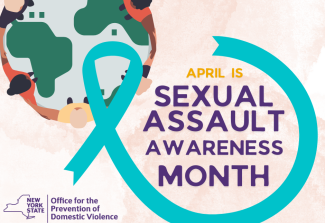Program Teaches Acceptance of Differences at Early Age
Teachers are trained to accommodate and relate to students who have disabilities, but children usually aren’t.
Dr. Patricia Egan, professor of school psychology, is out to change that. She is co-directing a new program with adjunct lecturer Andrea Martino that promotes friendships between students and their peers with autism spectrum disorder.
The Peer Network Program recruits students who exhibit maturity, empathy and respect for their peers. They learn about autism spectrum disorder, study social skills and are then paired with students with the disorder in an effort to provide the latter with the security and guidance that can be found through a peer relationship.
The program has a dual purpose. While serving from 7 to 12 autism spectrum disorder students per year, it also provides field training for 25 SUNY Plattsburgh psychology students. These undergraduate and graduate students help to guide the project from the first meeting to the four chaperoned outings, which include bowling, swimming and rock climbing.
At the initial pizza party meeting, the program directors, peer partners and their families are introduced and exchange contact information. This group is then educated on the disorder through videos and open discussion. Peer models are provided with profiles that highlight their partners’ personalities and interests and are given strategies for how best to initiate conversation and encourage social engagement. The goal is to build solid friendships to the benefit of both students, which will, in turn, set a positive example of acceptance for people in their schools and communities.
Funding is provided by the Sunmount Office for People with Developmental Disabilities. The program is an offshoot of the already successful Nexus Program, which provides social skill instruction for students with high-functioning autism spectrum disorder. According to Egan, the goal is to spread the word about students with ASD, letting others know that they are “pretty cool.”
Family and student responses have been positive. Exit surveys help to measure success, and, in most cases, the friendships have remained solid. When one peer model was asked what she would do if she saw her peer partner having trouble getting along with other kids, she replied: “I (would) try to get them all to get along, and I would hang out with them if they get along. If not, I would get him to come with me.”
For more information about the Peer Network Program, contact Egan at [email protected] or Andrea Martino at [email protected].
News

SUNY Adirondack Students Benefit from New Dual Agreement with SUNY Plattsburgh Queensbury

SUNY Recognizes Two Plattsburgh Seniors for Excellence in Academics, Leadership
